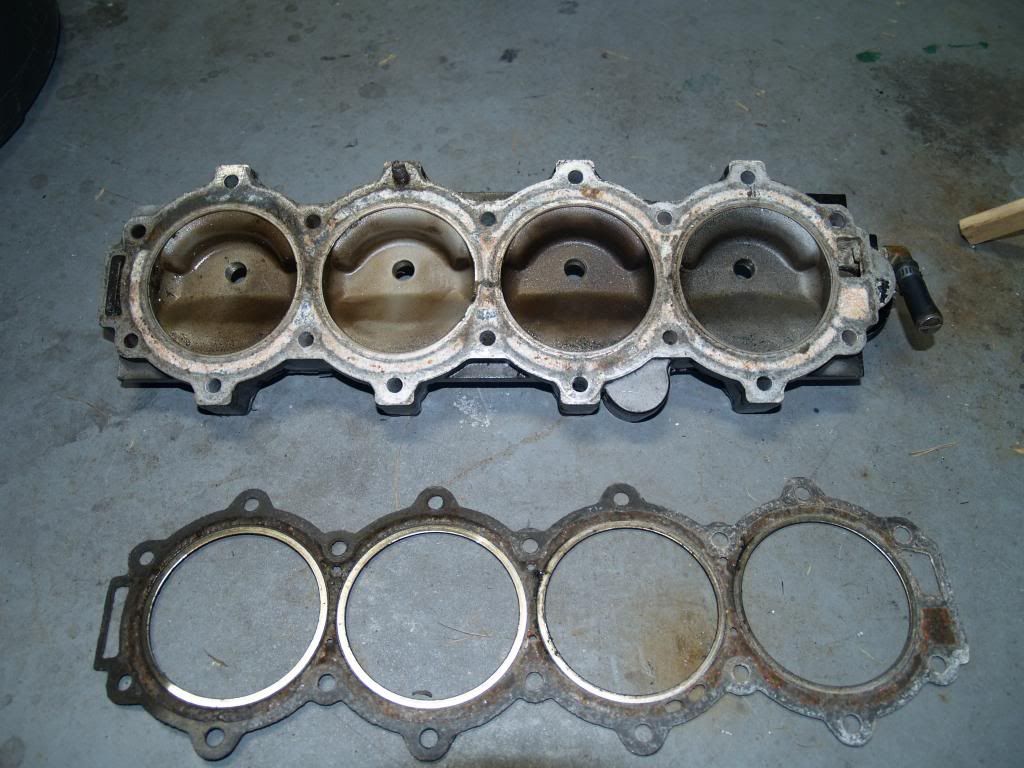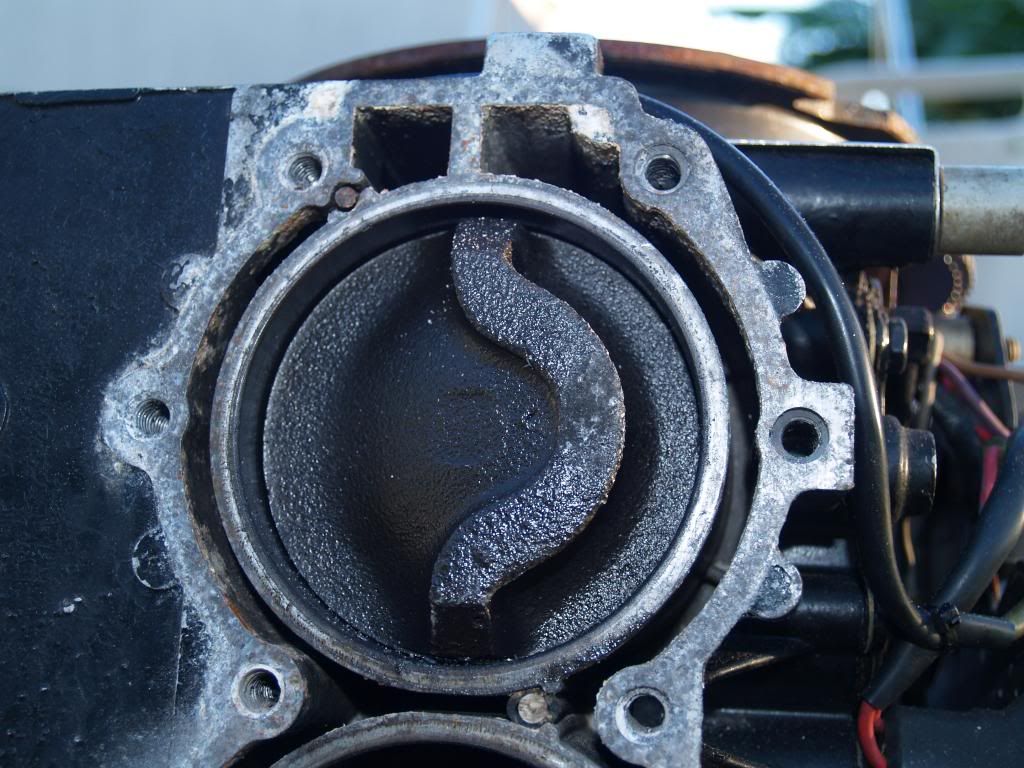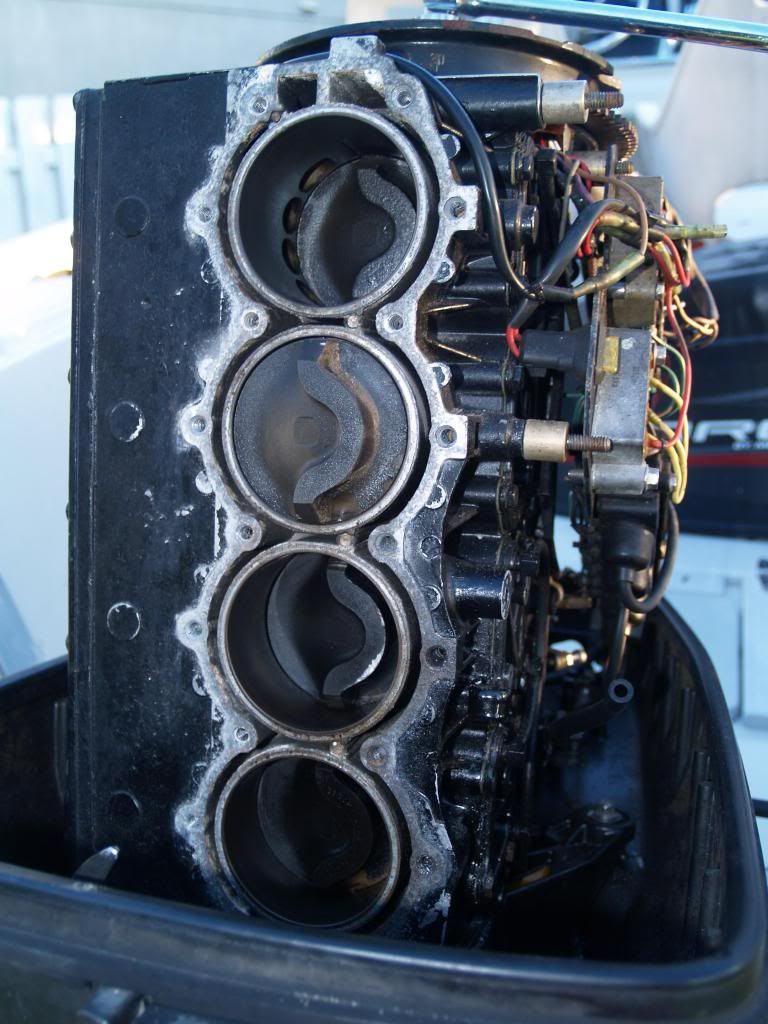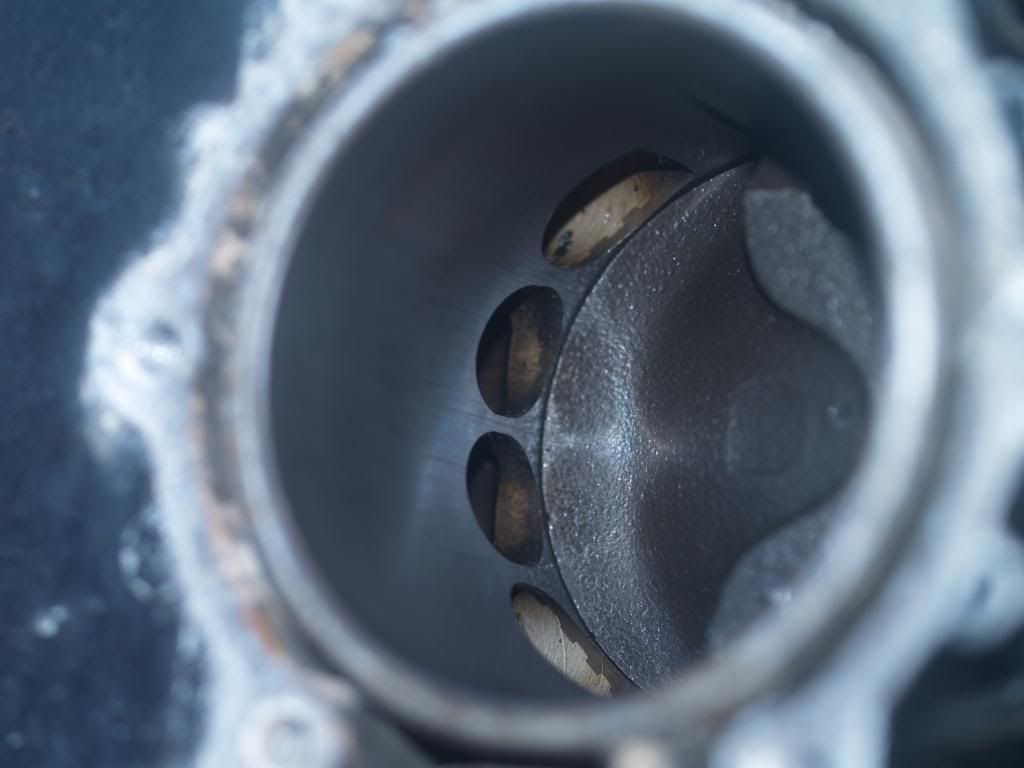Re: testing solenoid and where to get replacement - pictures of pistons
Re: testing solenoid and where to get replacement - pictures of pistons
I finally got the head free. Yeah. I was able to turn the crankshaft enough to get enough clearance to rotate the head and then it came right out. Amazingly the bolt is still stuck in the head. It seems when I put this back together I may need to tap the bolt hole. But I do not think it is too bad because it seems I have room to possibly just add a nut behind a longer bolt to get it down tight. There are a few scuff marks on the top of the pistons from my rocking the head back and forth but I do not think that will hurt.
Please see pictures below of the pistons. My initial observation is that the number one piston has a lot of carbon build up - the tops of the other three pistons seem relatively smooth in comparison. Remember cylinder one is the one with low compression. Also, I did run my fingers around all the cylinder walls and checked for grooves. I really can't feel much difference in cylinder number one compared to the others. There are for sure some little grooves that catch in my finger nails but I don't see anything significantly deeper in cylinder number one compared to the other three, which have good compression. I tried to get pictures of the grooves but I am not sure how much you can see. Anyway, I do not see any obvious problem other than the carbon build on on piston number one. Do you think the problem could be a bad valve? Should I open up the intake access for cylinder one or take off the exhaust cover? Thanks in advance for the advice.
Head finally removed and still has stuck bolt:

Note carbon build up on top of piston one (cylinder with low compression) compared to the others:



Walls of cylinder one:


Re: testing solenoid and where to get replacement - pictures of pistons
I finally got the head free. Yeah. I was able to turn the crankshaft enough to get enough clearance to rotate the head and then it came right out. Amazingly the bolt is still stuck in the head. It seems when I put this back together I may need to tap the bolt hole. But I do not think it is too bad because it seems I have room to possibly just add a nut behind a longer bolt to get it down tight. There are a few scuff marks on the top of the pistons from my rocking the head back and forth but I do not think that will hurt.
Please see pictures below of the pistons. My initial observation is that the number one piston has a lot of carbon build up - the tops of the other three pistons seem relatively smooth in comparison. Remember cylinder one is the one with low compression. Also, I did run my fingers around all the cylinder walls and checked for grooves. I really can't feel much difference in cylinder number one compared to the others. There are for sure some little grooves that catch in my finger nails but I don't see anything significantly deeper in cylinder number one compared to the other three, which have good compression. I tried to get pictures of the grooves but I am not sure how much you can see. Anyway, I do not see any obvious problem other than the carbon build on on piston number one. Do you think the problem could be a bad valve? Should I open up the intake access for cylinder one or take off the exhaust cover? Thanks in advance for the advice.
Head finally removed and still has stuck bolt:

Note carbon build up on top of piston one (cylinder with low compression) compared to the others:



Walls of cylinder one:





















